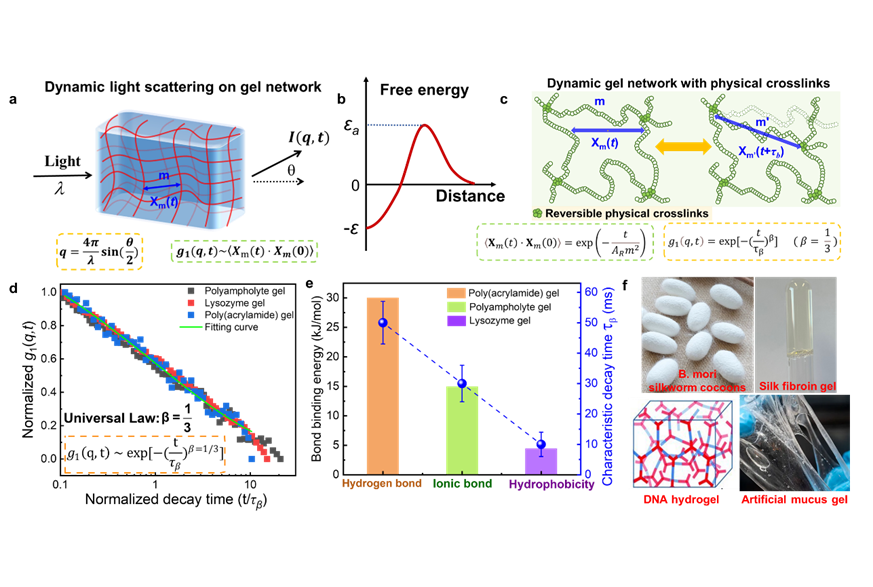Dissociation-association of weak physical bonds in gels amplifying into universal hierarchical gel dynamics
Prof. JIA Di’s group from the Institute of Chemistry, Chinese Academy of Sciences has reported the first experimental evidence ofa novel universality class in hierarchical dynamicsusing dynamic light scattering (DLS), revealing fundamental insights into reversible physical gel’s complex structures and dynamics while expanding the 50-year legacy of DLS applications beyond conventional chemical gels.
Dynamically adaptable reversible gels with crosslinks based on weak, dynamic physical bonds rather than permanent chemical bonds have emerged as a versatile material class across biological and synthetic systems.These physically bonds endow gel materials with remarkable properties like self-healing, time-programmable with a memory effect and recycling properties. Nevertheless, accurately quantifying the strength and fraction of weak physical cross-links and understanding how they lead to large-scale collective dynamical properties remain a significant challenge.
Based on a newly developed theory by Prof. Murugappan Muthukumar from University of Massachusetts Amherst, researchers addressed the physical origin of the universal hierarchical gel dynamics. In stark contrast with the standard chemical gels whose correlation function is pure exponential decay. For all the physical gels their correlation function can be fitted by a stretched exponential decay with a constant stretched exponent β = 1/3.
The stretched exponent β, which equals 1/3, originates from the hierarchical relaxation processes of reversible physical crosslinks as they dissociate and reassociate. This constant β value and the associated characteristic relaxation time τβ provide a universal law for all reversible physical gels, allowing for the quantification of local energetics within the gel structure.
Researchers confirmed this universal law across various complex gels, including artificial mucus, self-assembled DNA gel, and natural silk fibroin gels, etc. This discovery offers a rapid and effective method to determine whether chemical or dynamic physical bonds dominate in a gel’s crosslinks. It also enables the extraction of binding energies for complex physical crosslinks when multiple types of bonds are active simultaneously.
This study was published in Nature Communications.

Universal law of hierarchical gel dynamics arising from association-dissociation of physical crosslinks in complex gels monitored by DLS
Contact:
Prof. JIA Di
Institute of Chemistry, Chinese Academy of Sciences
Email: jiadi11@iccas.ac.cn





